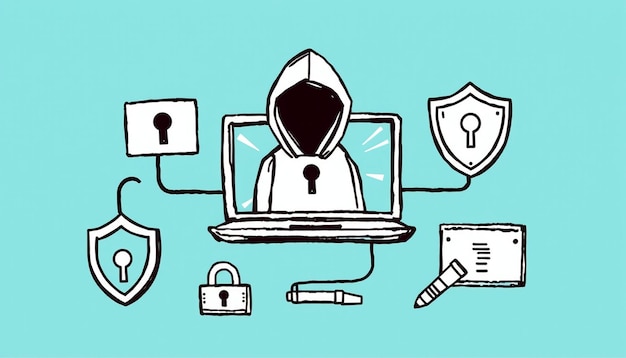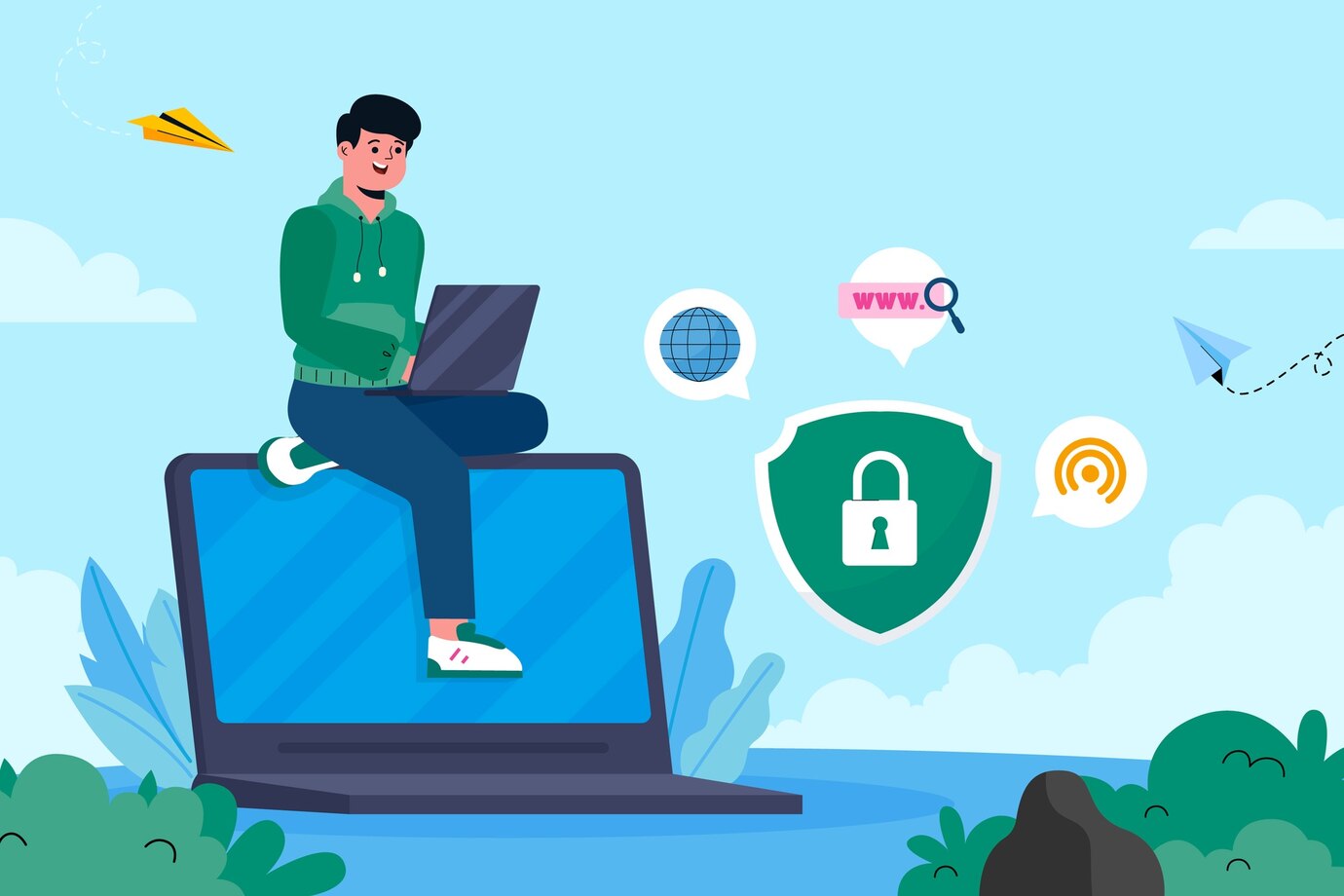In 2025, the interconnected world has become even more critical and cautious than ever as digital technologies have nearly circled every form of life. From online banking, e-commerce to healthcare vast amounts of data are stored and transmitted electronically.
The evolving cybersecurity problems require more than robust security measures and protective systems. Cybersecurity, including IT support NYC, is not just a technical challenge; it is a fundamental necessity for safeguarding the confidentiality, integrity, and availability of digital information systems, enabling a fast and safe digital future.
In this blog, we’re going to talk about cybersecurity—its importance in today’s digital world, the common network security problems businesses face, and practical tips to protect your data and systems from cyberattacks.
The Rising Threats in the Cybersecurity Landscape
Cybersecurity threats are rapidly increasing as technology is becoming more and more integrated into our daily lives.
Below are some of the key emerging threats in the cybersecurity dynamic:
Evolution of Ransomware:
- Targeted Attacks: Ransomware attacks have evolved from broad campaigns to more targeted efforts at specific industries such as healthcare and finance.
- Double/Triple Extortion: Attackers might not only encrypt data but also threaten to leak it unless the ransom is paid.
- Ransomware-as-a-Service (RaaS): This model allows even a non-technical person to launch a cybercriminal attack by renting out a ransomware kit from a developer.
Supply Chain Attack:
- Malicious attacks compromise third-party vendors to infiltrate their clients. Examples include SolarWinds breaches.
- These attacks exploit trust and access, making detection difficult.
Advanced Persistent Threats (APTs):
- State-sponsored and well-funded groups focus on long-term infiltration, which often targets critical infrastructure and stealing sensitive information.
The Evolving Cyber Threat Sketch
The worlds of cybersecurity is changing rapidly, with threats becoming more damaging. Below is an overview of current cyber security problems.
Ransomware and Malware Attacks:
Current Threats:
- Ransomware-as-a-Service (RaaS): Criminals provide ransomware kits to people who are non-techie attackers, for sharing profit.
- Double and Triple Extortion: Attackers might not only encrypt data but also threaten to leak all the sensitive information.
- Targeted Attacks: Critical sectors like healthcare and infrastructure are increasingly targeted due to their dependency on uptime.
Phishing and Social Engineering:
Current Threats:
- Spear Phishing: Some highly targeted attacks aimed at specific targets often leveraging personal information.
- Business Email Compromise (BEC): Cybercriminals act like executives to defraud organizations.
- Mobile and SMS Phishing: Exploiting the rise in mobile devices with fake links sent via text messages.
Insider Threats:
Current Threats:
- Malicious Insiders: Employees intentionally steal or leak sensitive information for personal gain.
- Negligent Insiders: Employees recklessly compromise systems via careless behavior such as weak passwords.
Supply Chain Vulnerabilities:
Current Threats:
- Third-Party Breaches: Cybercriminals targeting less secure vendors to gain access to a huge organization.
- Software Supply Chain Attacks: Compromising software such as SolarWinds incident.
Common Cyber security Problems Faced by Businesses
Problem 1: Lack of Awareness and Training
Employees as the First Line of Defense:
Employees are often the first line of defense against cyberattacks, but many lack the knowledge to recognize and respond to threats. Cybercriminals exploit the weakness through phishing emails, social engineering, and malicious links.
Examples of Breaches Caused by Human Error:
Clicking on phishing links will lead to malware installation.
Weak passwords result in unauthorized access.
Accidental sharing of sensitive information.
Problem 2: Inadequate Security Infrastructure
Outdated Software and Hardware Vulnerabilities:
Using legacy systems and failing to update software create entry points for attackers. Patch management is often overlooked, leaving systems susceptible to exploits.
Challenges in Implementing Robust Security Measures:
Small businesses might lack the resources to deploy advanced security solutions. But this is true for larger organizations as well, integrating and maintaining up-to-date security measures can be a complex process.
Problem 3: Data Breaches and Privacy Concerns
Risks to Sensitive Customer and Organizational Data:
Businesses collect vast information of data, making them their prime targets. A breach can expose sensitive information such as financial details and customer information leading to reputation and financial loss.
Compliance Challenges:
Meeting demanding regulatory requirements is a challenging task, especially cybersecurity for small businesses that are operating in multiple industries. Non-compliance can result in hefty fines.
Problem 4: Threat Detection and Incident Response
Difficulty in Identifying and Mitigating Threats in Real-Time:
Cyber threats are now becoming more sophisticated and crafty, making it difficult for businesses to detect breaches before major damage occurs.
The Importance of a Proactive Incident Response Plan:
Without a clear plan, organizations might face delays in containing and recovering from attacks, annoying the damage.
Why Cybersecurity is Important?
Cybersecurity is vital because it protects sensitive information, systems, and networks from cyber threats and unauthorized access. Now to answer your question: Why Cybersecurity is Important, because it safeguards customers’ trust and protects intellectual property.
Cyberattacks such as data breaches and phishing attacks can lead to compelling financial loss, legal consequences, and even reputational damage.
As cybersecurity threats have become increasingly sophisticated, giving priority to cybersecurity is vital for ensuring the stability and integrity of digital operations.
Is Cyber Security Worth It?
Cybersecurity is undeniably worth it, as it plays a critical role in protecting individuals, businesses, and governments from a range of cyber threats. It addresses problems like data breaches, identity theft, malware attacks, and phishing scams, which can cause financial losses, reputational damage, and even legal consequences.
Cybersecurity solutions ensure the confidentiality, integrity, and availability of sensitive information by preventing unauthorized access, detecting threats, and responding effectively to incidents.
In a world where cybercriminals continuously evolve their tactics, investing in cybersecurity is essential to safeguard personal information, protect intellectual property, and maintain trust in digital systems.
By solving these pressing problems, cybersecurity not only minimizes risks but also empowers organizations and individuals to operate safely in an increasingly digital environment.
How Organizations Are Solving These Problems?
Organizations address cybersecurity challenges using a combination of proactive measures and preparedness strategies. Below is an overview of how they are solving these problems:
Employee Training and Awareness Programs:
- Conduct regular workshops and seminars to educate employees on identifying phishing emails, recognizing social engineering attacks, and adhering to password management policies.
- Encouraging a culture of reporting suspicious activities without fear of reprisal.
- Use gamified learning tools to make training more fun, engaging, and memorable.
Role of AI and Machine Learning in Threat Detection:
- AI systems analyze vast datasets to detect unusual patterns of potential threats.
- Machine learning models enhance predictive capabilities, allowing organizations to respond to threats in real-time.
Benefits of Multi-Factor Authentication (MFA) and Encryption.
- MFA adds an extra layer of security by requiring two or more verification methods, making it harder for unauthorized users to access systems.
- Encryption ensures data confidentiality by converting sensitive data into unreadable formats unless it is decrypted by authorized keys.
Importance of Firewalls, VPNs, and Zero-Trust Architecture:
- Firewalls block unauthorized traffic and filter harmful data.
- VPNs secure remote connections, ensuring encrypted communication over network security in business.
- A zero-trust architecture assumes that no entity is trusted by default, implementing demanding verification processes for each access request.
Patch Management and Vulnerability Assessments:
- Routine updates and patches fix software vulnerabilities that cybercriminals can exploit.
- Conducting regular vulnerability assessments helps in identifying and mitigating risks before they can be exploited.
Cybersecurity Solutions for Individuals
Protecting Personal Devices and Data:
- Use Antivirus and Antimalware Software: Install reputable patches and security software to remove threats such as viruses, malware, and ransomware.
- Enable Automatic Updates: Keep your system and software updated to fix security vulnerabilities.
- Back-Up Data Regularly: Use cloud services to back up your crucial data in case of loss.
Recognizing Phishing Attempts and Scams:
- Be Aware of Unexpected Emails: Check the sender’s email address carefully. A legitimate organization that rarely asks for sensitive information through email.
- Look for Red Flags: Phishing emails often have spelling mistakes or generic greetings asking you to act immediately.
- Don’t Click on Suspicious Links: Hover over links to see their destination, and only click if it seems necessary.
- Verify Requests: If you receive an unexpected message asking for personal information, verify directly with the organization via official channels.
Importance of Password Hygiene and MFA:
- Use Unique Passwords: Combine uppercase, lowercase letters, and special characters.
- Password Managers: Use a trusted password manager to generate and store complex passwords securely.
- Enable MFA: Add an extra layer of security by requiring a second form of verification to log into accounts.
Computero is addressing cyber security problems such as pharming in cybersecurity where the attackers redirect users from legitimate websites for malicious purposes to steal sensitive information, by implementing advanced DNS security and user awareness training.
Key Takeaways
Addressing cyber security problems involves a proactive and comprehensive approach to safeguarding digital assets, sensitive data, and organizational systems from threats. Solutions focus on preventing unauthorized access, mitigating risks from malware and phishing, ensuring data privacy, and maintaining compliance with regulations.
By implementing robust measures such as advanced threat detection, regular updates, employee training, and secure system designs, organizations can build resilience against evolving cyber threats and ensure long-term security and trust in their operations.






